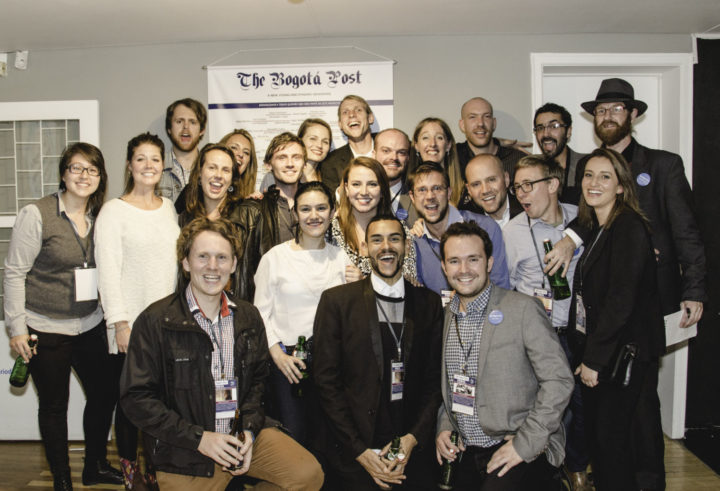Not long ago, if I’d told you that your cells, your arteries, and even your organs could be regenerated as part of lifesaving therapies, you might have thought I was confusing science fiction with reality. But the capabilities of regenerative medicine have advanced rapidly in the past few years, and now it’s possible to envision a regenerated future, complete with bioengineered ears.
As this concept becomes more feasible, trends in biotechnology are rapidly emerging, and entrepreneurs are uniquely placed to capitalize on them. These technologies are still in their infancy and will likely take a decade to come to full fruition, but bold entrepreneurs need to pay attention now if they want to make a difference in this incredible area of medical science.
These are the hottest biotech trends that entrepreneurs should be paying attention to now:
Regenerative Medicine
Regenerative science is the brand new area in which biotech attempts to mimic the process or results of authentic regeneration to heal or replace injured parts of the body. Not only will regenerative medicine try to improve the quality of life for patients by curing rather than simply treating disease, but it will also help combat rising healthcare costs.
The challenge for regenerative medicine right now is that we don’t understand how physiological regeneration works well enough to successfully imitate it. Still, scientists have a long way to go until they clearly see the significant promise of this field. Patients are currently undergoing regenerative medicine therapies in clinical trials, and lab-engineered bladders have already been implanted in patients. Moreover, they’re struggling with the transition from concept to application.
Stem Cell Therapy
This is the process of using live stem cells as the basis for regeneration by inserting stem cells into the injury site and hoping they continue to perform their natural regenerative function in the new environment. However, this trend is fraught with challenges, including how to fully simulate and synchronize the outside environment with the cells’ new environment inside the body.
Genetic Reprogramming
This method involves releasing natural regenerative properties and genetically engineering somatic cells to turn on their gene activation and reprogram their old structures to create new kinds of cells. Just like with the trends above, genetic reprogramming is in its early stages, but its implications for the treatment of diseases like Parkinson’s and diabetes cannot be ignored.
How Entrepreneurs Can Bring Biotech to Fruition
It’s clear these trends have the potential to disrupt healthcare immeasurably and save millions of lives, but how do entrepreneurs turn that huge change into practical solutions and business opportunities?
1. Incubation
Partnering with big brand names that support innovation incubators can give smaller companies and individuals a direct pathway to the leading edge of developments in regenerative medicine.
Earlier this year, Johnson & Johnson announced its new innovation lab to “fuel entrepreneurship in the world’s scientific hot spots.” This is just one of many such incubatorial projects that empower entrepreneurs to make valuable and unique contributions to regenerative medicine.
2. Collaboration
Incubators are only one way for startups and entrepreneurs to get their innovations off the ground. There are many forms of alliances that the business community can leverage to help these trends progress faster and more safely.
Seeking partnerships with research universities and institutes, signing up for biotech conventions, and forging relationships with big pharma — which has been increasingly interested in collaborating with biotech entrepreneurs to bolster their bottom line — are all possible ways for entrepreneurs to get in on the ground floor.
No matter which partnerships entrepreneurs choose, collaboration is the key to using these technologies to answer the world’s most formidable medical questions.
3. Specialization
Entrepreneurs are in a unique position to join and advance the progress of regenerative medicine. By applying specialized knowledge, academic expertise, practical skills and tools, patents, and experimental innovations, entrepreneurs can add power and fuel to the regeneration crusade.
Whether it’s using 3-D printing to engineer a new ear like the bioengineering team at Cornell University or creating new technologies for implanting cells like Ankit Agarwal, fascinating things come in small packages.
It’s important to remember that we’re still talking about conceptual regenerative science; the ultimate goal is to be able to remove the word “conceptual” and transform it into applied regenerative science.
By collaborating with academia, the government, and corporations and using the core qualities inherent to entrepreneurship — specialized knowledge, flexibility, and innovation — the business community can propel regenerative science forward to its new applied status. Let the healing begin.
About the Author:
 Kevin Xu is the CEO ofMEBO International, a California- and Beijing-based intellectual property management company specializing in applied health systems. He also leads Skingenix, which specializes in skin organ regeneration and the research and development of botanical drug products. Skingenix is listed in the 2014 Empact100 Showcase.
Kevin Xu is the CEO ofMEBO International, a California- and Beijing-based intellectual property management company specializing in applied health systems. He also leads Skingenix, which specializes in skin organ regeneration and the research and development of botanical drug products. Skingenix is listed in the 2014 Empact100 Showcase.
—————————————-
Photo Credit: Jean-Etienne Minh-Duy Poirrier










